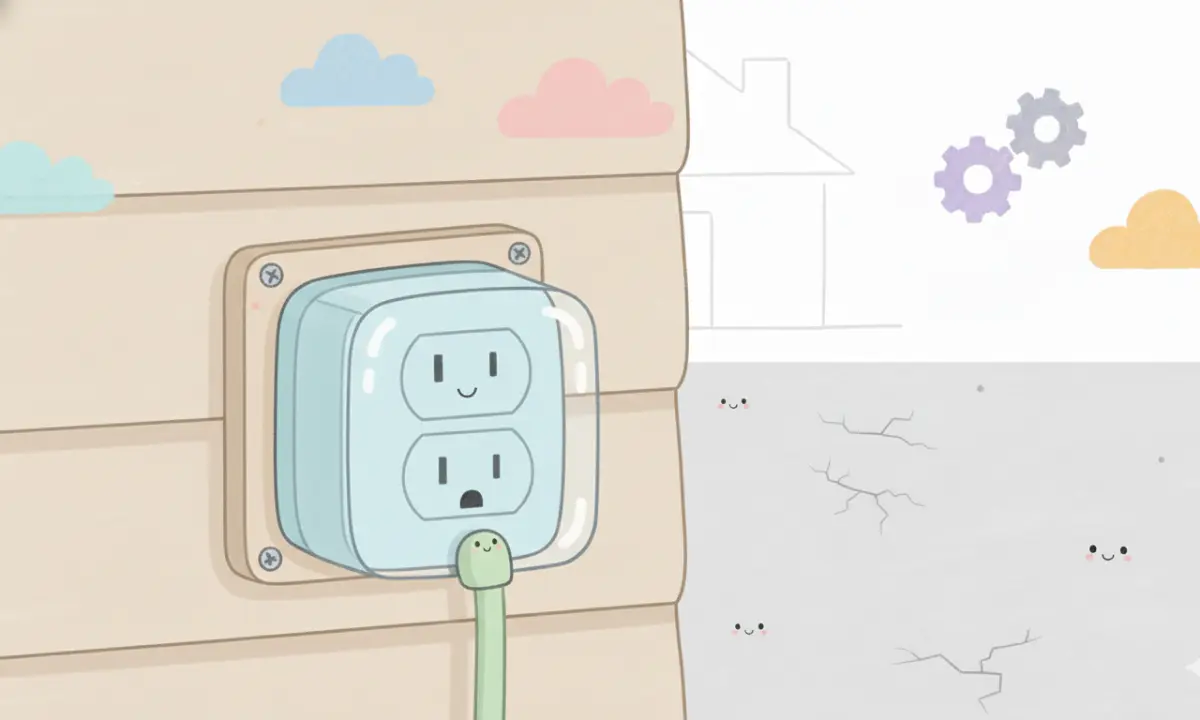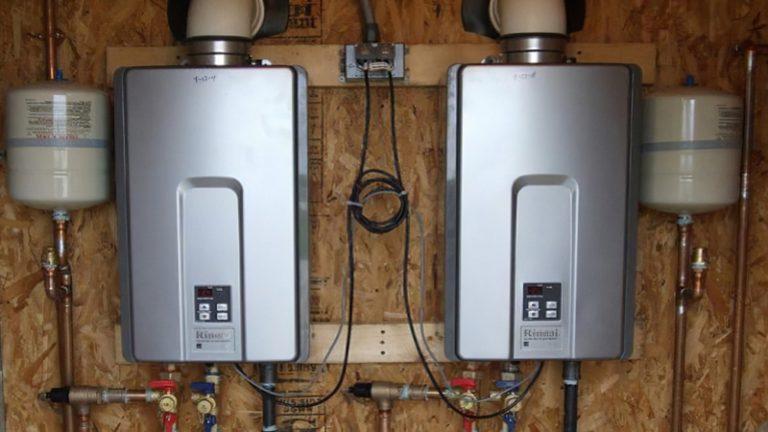No Outlets Outside Your House? This Is the Ultimate Fix
It’s a modern frustration that feels like it should be a thing of the past. You want to pressure wash the deck, plug in some patio lights, or use an electric lawnmower, but you’re stopped in your tracks.
You realize there are no outlets outside your house. This guide provides the ultimate fix, transforming your outdoor spaces from powerless to powerful.
You'll Learn About
Why Your Home is Missing Outdoor Power
The absence of exterior outlets is especially common in older homes built before modern electrical codes. The National Electrical Code (NEC) now mandates new homes have at least one receptacle in the front and back.
In some cases, previous owners may have removed or covered outlets during renovations. Understanding the cause helps in planning the best solution for your property.
The Hazards of Unsafe Electrical Workarounds
When faced with no outdoor power, it’s tempting to run an extension cord through a window or doorway. This is a significant safety risk. The cord can get pinched and damaged, creating a fire hazard.
An open door or window also compromises your home’s security and energy efficiency. Using indoor power strips outside is even more dangerous, as they lack the necessary weatherproofing and can easily short out.
The Permanent Solution: Installing a New Outdoor Outlet
The most reliable and safest solution is to install a dedicated, weatherproof outdoor outlet. This is a project that adds significant value and convenience to your home. There are a few ways to approach this permanent upgrade.
Option 1: The Back-to-Back GFCI Installation
This is the most common and cost-effective method for adding an outdoor outlet. The process involves tapping into an existing interior outlet that is located on an exterior wall. It’s a straightforward project for those with basic electrical knowledge.
First, you must turn off the power at the circuit breaker. After confirming the power is off, you’ll cut a hole on the exterior wall directly behind the interior outlet, install a weatherproof box, and run a short length of wire to connect the new outdoor GFCI outlet.
A Ground Fault Circuit Interrupter (GFCI) outlet is crucial for outdoor installations. It provides vital protection against electrical shock by automatically cutting power if it detects an imbalance in the current, which can happen if the equipment gets wet.
Option 2: Running a Brand New Circuit
If you plan on using high-power tools or there isn’t a convenient interior outlet to tap into, running a new circuit from your home’s breaker panel is the best choice. This is a more complex job that involves drilling holes and routing electrical cable through your walls, basement, or crawlspace.
Due to the complexity and safety risks, installing a new circuit is a task best left to a licensed electrician. A professional will ensure the work is done to code, providing a safe and reliable power source for heavy-duty applications like outdoor workshops or hot tubs.

Option 3: The Smart Light Fixture Conversion
Did you know that an existing outdoor light could be your ticket to outdoor power? This clever solution involves replacing a standard porch or patio light with a fixture that includes a built-in GFCI outlet.
This method can be much simpler than running new wires through your walls. If you want to explore this power upgrade, you can learn all the steps and considerations to convert an outdoor light to an outlet.
Comparing Your Outdoor Power Solutions
Choosing the right path forward depends on your budget, DIY comfort level, and power needs. This table breaks down the most common options to help you decide.
| Solution | Best For | Estimated Cost | Pros | Cons |
|---|---|---|---|---|
| New GFCI Outlet (DIY) | General use, power tools, lighting | $25 – $75 | Permanent, safe, adds home value | Requires electrical skills |
| New Circuit (Professional) | High-power needs, workshops | $250 – $600+ | Most powerful and reliable option | Most expensive, requires hiring a pro |
| Light Fixture Conversion | Adding power where a light already exists | $40 – $150 | Convenient, less invasive installation | Outlet may be high up or on a switch |
| Battery & Solar Power | Renters, temporary needs, lighting | Varies widely | No installation, portable, eco-friendly | Limited power output, weather dependent |
Temporary and Alternative Power Solutions
If a permanent installation isn’t feasible right now, you still have safe options. Modern technology offers powerful alternatives that don’t require any wiring.
Using Heavy-Duty Extension Cords Safely
For temporary tasks, a heavy-duty, outdoor-rated extension cord is your best friend. Look for a cord with a low gauge number (12-gauge is excellent for most tools) and ensure it’s long enough to reach without being stretched.
Always plug it into a GFCI-protected outlet, and never use an indoor cord outside. When you’re finished, unplug and store the cord to protect it from weather and sun damage.
Embrace Battery and Solar Technology
The market for battery-powered tools has exploded, offering everything from lawnmowers to leaf blowers that rival their gas counterparts in power. These tools eliminate the need for cords and outlets entirely.
For lighting, solar is a fantastic solution. From pathway lights to decorative string lights, solar power provides ambiance and security with zero electrical work. This is an especially useful strategy for those wondering how to hang Christmas lights outside without an outlet.
Protecting Your New Outdoor Power
Once you have outdoor power, protecting it is key. Every outdoor outlet must have a weatherproof “in-use” cover, often called a bubble cover. This allows you to keep items plugged in while protecting the connection from rain and snow.
Regularly test your GFCI outlets by pressing the “TEST” button to ensure they are functioning correctly. Proper maintenance is vital, similar to how you must protect your outdoor washer and dryer from the elements to ensure longevity and safety.
Frequently Asked Questions
How much does it cost to have an outdoor outlet installed?
The cost for a professional electrician to install a new outdoor GFCI outlet typically ranges from $250 to $450. The final price depends on the complexity of the job, such as whether a new circuit is needed.
Is a GFCI outlet required outdoors?
Yes, absolutely. The National Electrical Code (NEC) mandates that nearly all outdoor receptacles in residential locations must have GFCI protection. This is a critical safety feature that prevents severe electrical shock.
Can I install an outdoor outlet myself?
If you have experience with electrical wiring and a solid understanding of safety protocols, installing an outlet using the back-to-back method can be a DIY project. However, for running new circuits or if you have any uncertainty, always hire a licensed electrician.
Unlock Your Home’s Outdoor Potential
Having no outlets outside your house is a solvable inconvenience. From permanent installations to modern battery-powered solutions, you have multiple paths to bring power to your yard, patio, and garden.
By prioritizing safety and choosing the right solution for your needs, you can unlock the full potential of your outdoor living spaces. Enjoy the freedom and convenience of reliable outdoor power.
Frequently Asked Questions
Why does my house not have any outdoor outlets?
Older homes were often built before outdoor power was a standard feature. Building codes and common homeowner needs have changed over time. In some cases, existing outdoor outlets may be non-functional due to issues like a tripped GFCI or a problem with the circuit breaker.
What are my options for outdoor power if I don’t have an outlet?
For temporary needs, you can use an outdoor-rated extension cord connected to an indoor outlet. For a long-term solution, you can have a licensed electrician install a new, dedicated outdoor outlet. Other alternatives include solar-powered devices, battery-operated lights, and portable power stations.
Is it safe to use an extension cord outside?
It is safe to use an extension cord outdoors only if it is specifically rated for outdoor use. These cords are designed with materials that can withstand moisture, temperature changes, and UV exposure. Never use an indoor extension cord outside, as this can create a fire hazard and risk of electric shock.
How much does it cost to have an outdoor outlet installed?
The cost to install an outdoor outlet can vary depending on the complexity of the installation. On average, you can expect to pay between $180 and $350 for a professional electrician to install a new outdoor GFCI outlet. Factors that can influence the price include the location of the outlet and whether a new circuit needs to be added.
Can I install an outdoor outlet myself?
While it may be possible for those with significant electrical experience, it is highly recommended to hire a licensed electrician for this job. Installing an outdoor outlet involves working with your home’s electrical system and ensuring the installation is up to code with proper weatherproofing and GFCI protection. Mistakes can lead to safety hazards, so professional installation is the safest choice.
Are there any wireless options for outdoor lighting?
Yes, there are several wireless options available for outdoor lighting if you don’t have an outlet. Solar-powered lights are a popular and eco-friendly choice that charge during the day and automatically turn on at night. Battery-operated lights also offer flexibility and can be placed anywhere without the need for cords.

